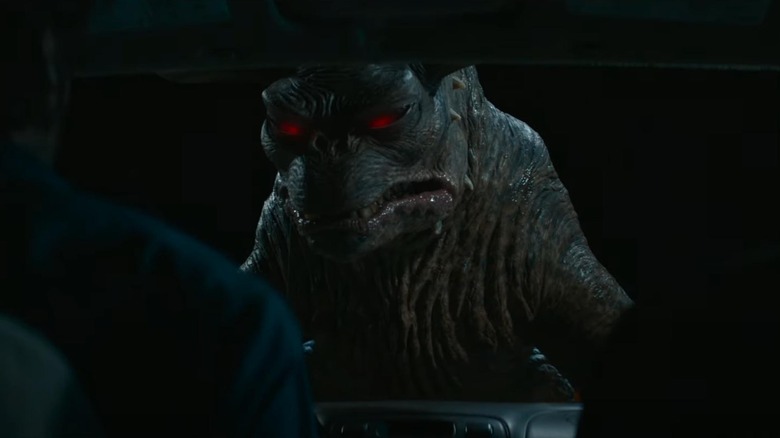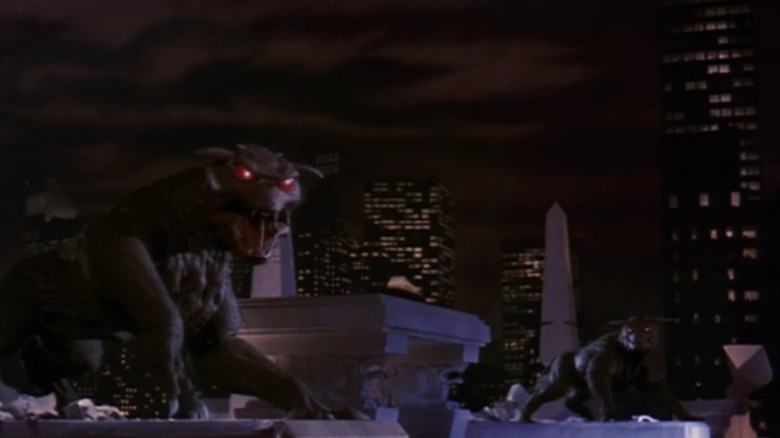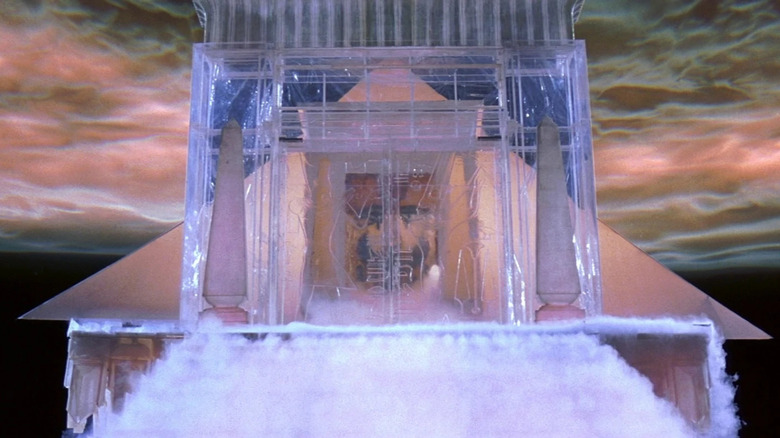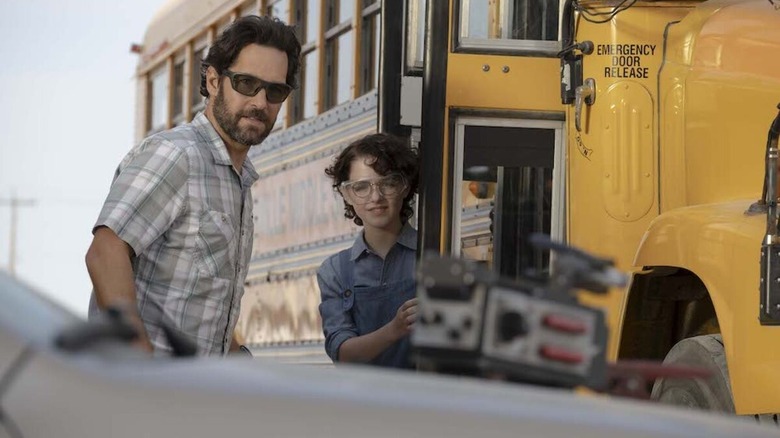Ghostbusters: Afterlife Made Some Subtle Changes To The Beastly Terror Dogs
Most people don't consider 1984's "Ghostbusters" to be a horror movie, let alone a terrifying one. Yet those of us who grew up with the film have two spectral beasties burned permanently into our brains out of sheer terror: the Library Ghost and the Terror Dogs.
While the Library Ghost is harmless as long as you leave her alone (and keep quiet, of course), the Terror Dogs are another matter; why, they'll attack you outside the Tavern on the Green if they feel like it! The main reason these supernatural creatures inspire such dread is due to their design: their toothy, horned, glowing-red-eyed appearance courtesy of sculptor Randall Cook, who had a hand in numerous genre films, including horror classics "The Thing," "Fright Night," and "The Gate."
When director Jason Reitman wanted to make "Ghostbusters: Afterlife" a proper legacy sequel by paying homage to the original film while bringing a unique spin to the franchise, he turned to concept artist Brynn Metheney and creature effects designer Arjen Tuiten to bring the Terror Dogs back to life. Metheney and Tuiten made sure to keep these new Terror Dogs looking as similar as possible to their ancestors, but added a series of subtle new changes, one of which more directly connects the Dogs to their extra-dimensional master.
The Terror Dogs get to move more like real animals in Afterlife
In the original "Ghostbusters," when the Terror Dogs ran through the streets of NYC, they were animated via a stop-motion process that was later optically composited into the live-action photography. As such, their movement was awkward, with the creatures not running so much as leaping toward their victim.
In Ozzy Inguanzo's book "Ghostbusters: Afterlife: The Art and Making of the Movie," Metheney explained how the original design of the Dogs prohibited their range of movement:
"The Terror Dog in the original Ghostbusters was built at a time where it wasn't going to be animated doing high-velocity running through a street. The front arms are so long that it doesn't really have a great range of motion when you're wanting it to move around like a dog."
In order for the Dogs in "Afterlife" to be able to move more like real creatures, Metheney realized the design team "needed to break the anatomy of the original and go into animal territory." Thus, Metheney conceived a new formation for the creature that would fix its movement issues but retain its classic look:
"My initial concept was to keep the same silhouette, with this huge barrel chest, long thick neck, big forearms, and skinnier back end, but bring in an element of functional anatomy that made it able to run around and have this heavy, scary gait."
Afterlife's Terror Dogs get a hidden (extra) reference to Gozer
By the time Tuiten and his team had to make physical puppet versions of the new Terror Dogs, they found that, "Because of the high-definition quality of cameras now compared to '84, the skin texture, overall paint job, and details of the mouth, teeth, and face had to be a little bit more refined," as the designer explained.
This extra refinement caused Tuiten to appreciate a clever new hidden detail that Metheney had added in her redesign. "Brynn had a great idea of putting triangles in their glowing eyes that I thought was awesome," Tuiten said. Being a student of Cook's original Terror Dog design, Tuiten knew that the creatures already physically referenced the realm of their master, the evil Gozer the Gozerian. "If you silhouette the Terror Dog, it's a triangle — it's the Temple of Gozer," he explained.
Given that the Terror Dogs are really the supernatural forms of Gozer's minions Zuul and Vinz Clortho, their triangle shapes become subtle indications of their inner characters, something that every creature design should strive for.
(Happy) accidents will happen when practical effects are around
1984's "Ghostbusters" was made during an era of special effects where practical effects made up the foundation of an effects artist's toolbox. Given how, nearly 40 years on, the effects landscape is now primarily a digital one, the "Afterlife" effects team had to find ways of maintaining the Terror Dogs' ferocity on screen.
Yet just because "Afterlife" makes copious use of computer generated imagery doesn't mean there were no old-school effects techniques used on the film. Tuiten and his team not only constructed a puppet version of their new Terror Dog, they employed a veteran effects artist from the first "Ghostbusters" to help do so. As Tuiten explained:
"Bill Sturgeon, who worked on the original Terror Dog in '84, actually designed the mechanics on this Terror Dog and helped puppeteer it. It takes five to six puppeteers to operate, and will be used to interact with the actors for closeups and over-the-shoulder shots. And it will scare a lot of people."
That reaction of fear was exactly what the "Afterlife" crew was after in using a practical puppet during shooting, Tuiten explaining how, "What's great about a practical physical effect in-camera is that happy accidents will happen, and it's something for actors to interact with." Director Reitman remarked how he "can't help but think that [the practical Terror Dog] affected the performances," allowing the new version of the creature with its subtle changes to better creep out a new generation of children — and, perhaps, remind a now-adult generation of their childhood fears.



